Remarketing and Retargeting (Online Advertising)
Remarketing and retargeting are two powerful digital marketing strategies that have become essential tools for businesses looking to engage with their target audience and drive conversions. In this comprehensive guide, we will explore the intricacies of these techniques, their benefits, and how to implement them to achieve your marketing goals effectively.
Understanding Remarketing and Retargeting
Remarketing and retargeting are often used interchangeably, but they refer to slightly different approaches to reaching potential customers.
Remarketing
Remarketing is the process of targeting individuals who have previously interacted with your brand or website. This could include visitors who have abandoned their shopping carts, viewed specific products or pages, or engaged with your content in some way. By serving them targeted ads, you can remind them of your offerings and encourage them to return to your website and complete a desired action.
Retargeting
Retargeting, on the other hand, is a more broad approach that involves targeting individuals based on their online behavior, regardless of whether they have previously interacted with your brand. This could include targeting users who have visited similar websites, searched for specific keywords, or exhibited certain demographic or interest-based characteristics.
The Benefits of Remarketing and Retargeting
Implementing a well-crafted remarketing and retargeting strategy can provide numerous benefits for your business, including:
Increased Conversions
By targeting individuals who have already shown interest in your products or services, you can significantly increase the likelihood of them converting. Remarketing and retargeting campaigns have been shown to have higher conversion rates compared to traditional advertising.
Enhanced Brand Awareness
Consistent exposure to your brand and messaging can help to reinforce your brand's presence in the minds of your target audience, making them more likely to remember and consider your offerings when they are ready to make a purchase.
Improved Efficiency
Remarketing and retargeting allow you to focus your advertising efforts on individuals who have already demonstrated an interest in your business, rather than wasting resources on reaching a broader, less engaged audience.
Personalized Experiences
By leveraging data on user behavior and preferences, you can create highly personalized ad experiences that are more likely to resonate with your target audience and drive engagement.
Implementing Remarketing and Retargeting Strategies
To effectively implement remarketing and retargeting strategies, consider the following steps:
1. Identify Your Target Audience
Begin by clearly defining your target audience, including their demographics, interests, and online behavior. This will help you to create more targeted and effective campaigns.
2. Set Clear Objectives
Determine your specific marketing goals, such as increasing website traffic, boosting conversions, or improving brand awareness. This will help you to measure the success of your campaigns and make informed decisions about your strategy.
3. Collect and Analyze Data
Utilize tools and platforms, such as Google Analytics, to gather data on your website visitors' behavior and interactions. This information will be crucial in informing your remarketing and retargeting efforts.
4. Create Compelling Ad Content
Develop visually appealing and engaging ad content that speaks directly to your target audience's needs and interests. Consider using dynamic ad content that can be personalized based on user behavior.
5. Optimize and Measure Performance
Continuously monitor the performance of your remarketing and retargeting campaigns, and make adjustments as needed to improve their effectiveness. Regularly review your metrics and adjust your targeting, messaging, and ad placements accordingly. By following these steps and leveraging the power of remarketing and retargeting, you can unlock new opportunities for growth and success in your digital marketing efforts.
AI SEO Services can help businesses with remarketing and retargeting
Improved Audience Targeting
- AI can analyze customer data and behavior to create highly personalized and targeted remarketing/retargeting campaigns. It can identify the best audiences to target based on factors like purchase history, browsing behavior, demographics, and more.
- AI can determine the optimal frequency, messaging, and creatives to show each individual user to maximize engagement and conversions.
Dynamic Ad Creativity
- AI can automatically generate and optimize dynamic ad creatives that are personalized for each user based on their interests and behaviors.
- This allows for more engaging and relevant ads that are more likely to capture the user's attention and drive them back to the website.
Predictive Modeling and Optimization
- AI can analyze past user behavior and interactions to predict which users are most likely to convert if retargeted.
- It can then automatically adjust bids, budgets, and campaign parameters to focus resources on the highest-potential users and maximize ROI.
Expanded Reach and Retargeting Capabilities
- AI-powered retargeting platforms can leverage large data sets and integrations with various ad networks to expand the reach of retargeting campaigns.
- This allows businesses to reconnect with more of their website visitors across the web, social media, and other digital channels.
Reduced Manual Effort
- By automating many of the data analysis, audience segmentation, and campaign optimization tasks, AI can significantly reduce the manual effort required to manage effective remarketing and retargeting programs.
- This frees up marketing teams to focus on higher-level strategy and creative work.
In summary, AI SEO Services can leverage machine learning and predictive analytics to make remarketing and retargeting campaigns more targeted, personalized, and effective at driving conversions and revenue for businesses. The key is leveraging the right AI-powered tools and platforms to unlock these benefits.
What is the difference between remarketing and retargeting?
Remarketing and retargeting are often used interchangeably, but they refer to slightly different approaches to reaching potential customers. Remarketing is the process of targeting individuals who have previously interacted with your brand or website, such as visitors who have abandoned their shopping carts or viewed specific products. Retargeting, on the other hand, is a more broad approach that involves targeting individuals based on their online behavior, regardless of whether they have previously interacted with your brand. This could include targeting users who have visited similar websites, searched for specific keywords, or exhibited certain demographic or interest-based characteristics. The key difference is that remarketing focuses on re-engaging with known users, while retargeting casts a wider net to reach new potential customers based on their online activities.
How can AI-powered SEO services help with remarketing and retargeting?
AI-powered SEO services can significantly enhance remarketing and retargeting efforts by leveraging machine learning and predictive analytics. These services can analyze customer data and behavior to create highly personalized and targeted campaigns, automatically generate dynamic ad creatives, and optimize campaigns for maximum ROI. AI can also expand the reach of retargeting campaigns by integrating with various ad networks and platforms, and reduce the manual effort required to manage these programs by automating many of the data analysis and optimization tasks. By harnessing the power of AI, businesses can unlock more effective remarketing and retargeting strategies that drive increased conversions, improved brand awareness, and better overall marketing performance.
What are the key benefits of implementing a remarketing and retargeting strategy?
Implementing a well-crafted remarketing and retargeting strategy can provide numerous benefits for businesses. Firstly, it can lead to increased conversions by targeting individuals who have already shown interest in your products or services, making them more likely to complete a desired action. Secondly, consistent exposure to your brand and messaging can enhance brand awareness, making your offerings more top-of-mind for potential customers. Thirdly, remarketing and retargeting allow for a more efficient use of advertising resources by focusing on engaged users rather than a broader, less interested audience. Finally, these strategies enable the creation of highly personalized ad experiences that are more likely to resonate with your target audience and drive engagement. By leveraging the power of remarketing and retargeting, businesses can unlock new opportunities for growth and success in their digital marketing efforts.
Looking for Top Digital service?
Call anytime

